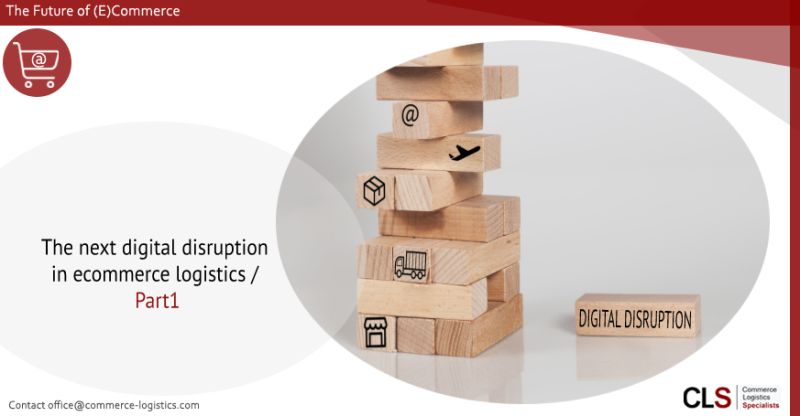The next digital disruption in ecommerce logistics / Part 1

𝗖𝗟𝗦 𝘀𝗽𝗲𝗮𝗸𝘀 𝗼𝘂𝘁:
𝗧𝗵𝗲 𝗻𝗲𝘅𝘁 𝗱𝗶𝗴𝗶𝘁𝗮𝗹 𝗱𝗶𝘀𝗿𝘂𝗽𝘁𝗶𝗼𝗻 𝗶𝗻 𝗲𝗰𝗼𝗺𝗺𝗲𝗿𝗰𝗲 𝗹𝗼𝗴𝗶𝘀𝘁𝗶𝗰𝘀 / 𝗣𝗮𝗿𝘁𝟭
Although for years “omnichannel” has been the popular mantra, the reality was different. Big online retailers and marketplaces, the undefeated and clear #winners of the last decade, expanded their physical presence, but often only for marketing purposes and to support their dominant #ecommerce business. In response, the brick-and-mortar retailers tried to strengthen their #digital presence, but have largely failed.
The trend seemed clear: an inexorable decline in brick-and-mortar #retail, similar to the market evolution of letters and parcels, with grocery retail as the last remaining battleground.
However, this outlook has changed fundamentally over the past few years. It is helpful to look at the recent #developments in the markets to understand why.
𝗜𝘁 𝘀𝘁𝗮𝗿𝘁𝗲𝗱 𝘄𝗶𝘁𝗵 𝘁𝗵𝗲 𝗽𝗮𝗻𝗱𝗲𝗺𝗶𝗰
The #pandemic and its associated #lockdowns boosted #business for #onlineretailers. Brick-and-mortar retail (except for grocery and a few others) lost revenue: #customers increasingly ordered online and this became a habit. Online retailers and #marketplaces enjoyed unprecedented growth rates.
Stationary retail reacted to the changes with increasing resignation. Large marketplaces and online retailers seemed to be on their way to true #omnichannel commerce and continued to grow. Food retailers were only minimally impacted – they profited from the lockdowns and were convinced that food would never be ordered and delivered online on a large scale.
However, thanks to the pandemic a few major brick-and-mortar retailers did succeed in achieving the previously unthinkable, building a #successful online business designed to compete with the pure online players.
The key #successfactor for these brick-and-mortar players was realizing that their dense #storenetworks represented vital #infrastructure for same-day delivery, and #outlets could be used as micro-fulfilment hubs. Only a few managed this #transformation successfully, with the #insight and ability to implement it, but those who did, did well. One example is Walmart in the USA, which grew well above the average #marketgrowth rate, and significantly faster than Amazon.
Although #carriers were seeing their highest #volumes ever, the market dominant pure online marketplaces and local retailers began to compete by launching their own #deliveryservices. As a result, carriers started to become concerned about being relegated to the position of suppliers of leftover volumes for the major purely online players.
This represents a #strategicchallenge which most of the carriers have now recognised. However, effectively drowning und er the tremendous volume growth during the pandemic, the urgency with which they need adapt has not been generally understood.
Click here for the LinkedIn-Article.

Walter Trezek
Document Exchange Network GmbH

